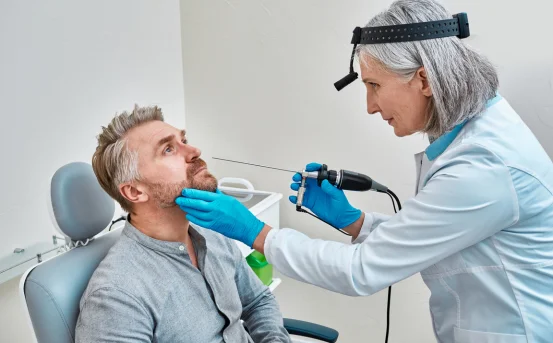Partial gastrectomy surgery is a medical procedure that involves the surgical removal of a part of the stomach. This operation is often recommended to treat a variety of conditions, including stomach cancer, ulcers, benign tumors, and in some cases, obesity. With advances in surgical techniques and medical care, partial gastrectomy has become a widely performed and generally safe procedure when carried out by experienced professionals.
The human stomach plays a vital role in digestion by breaking down food and preparing it for absorption in the intestines. However, certain medical conditions such as stomach cancer, chronic peptic ulcers, or non-cancerous tumors can severely affect its structure and function. When medications and lifestyle changes are not enough to manage these conditions, surgical intervention becomes necessary. One such life-saving procedure is partial gastrectomy surgery.
What is Partial Gastrectomy Surgery?
Partial gastrectomy is a type of stomach surgery where a portion of the stomach is surgically removed. The remaining part of the stomach is then connected to either the small intestine or the remaining portion of the digestive tract, allowing food to continue passing through the digestive system. The extent of stomach removal depends on the underlying condition being treated and the location of the affected tissue.
This surgery can be performed using two main techniques :-
-
Open surgery :- Involves a larger incision in the abdomen to access the stomach.
-
Laparoscopic (minimally invasive) surgery :- Involves small incisions, a camera, and specialized instruments, resulting in less pain and quicker recovery.
Why is Partial Gastrectomy Performed?
Partial gastrectomy is usually recommended when a section of the stomach has been affected by disease or damage that cannot be treated with medication alone. The common conditions that may require this procedure include :-
- Stomach Cancer :- One of the most common reasons for partial gastrectomy is the presence of gastric cancer. When cancer is localized and hasn’t spread extensively, removing the affected part of the stomach can prevent the disease from progressing.
- Severe Peptic Ulcers :- In cases where peptic ulcers are resistant to medications or have led to bleeding or perforation, removing the ulcerated portion of the stomach can be a definitive solution.
- Benign Tumors and Polyps :- Non cancerous growths that are large, painful, or bleeding may also be treated with partial gastrectomy.
- Obesity (Bariatric Indications) :- In selected cases of morbid obesity, partial gastrectomy may be used to restrict food intake and promote weight loss. This variation is often referred to as sleeve gastrectomy.
How to Prepare for Partial Gastrectomy Surgery?
Before the surgery, your doctor will likely recommend a range of diagnostic tests, including imaging scans, endoscopy, and blood work, to assess the condition of your stomach and overall health. You may be advised to stop certain medications, especially blood thinners, several days before the procedure.
Fasting is usually required for several hours before surgery, and patients are often admitted a day before the operation for final preparations. Your surgeon and anesthesiologist will discuss the surgical plan, anesthesia options, and what to expect during recovery.
What Happens During the Surgery?
Partial gastrectomy is performed under general anesthesia and can take anywhere from 2 to 4 hours depending on the complexity. During the surgery :-
-
The surgeon makes an incision in the abdomen or uses a laparoscopic approach to access the stomach.
-
The diseased portion of the stomach is identified and carefully removed.
-
The remaining stomach is then reattached to the small intestine or other part of the digestive tract.
-
Drainage tubes may be placed temporarily to remove fluids and prevent infection.
-
The incisions are closed with sutures or staples, and the patient is moved to recovery.
Recovery After Partial Gastrectomy
Recovery from partial gastrectomy can vary based on the patient’s age, overall health, and the type of surgery performed. Generally, hospital stays range from 5 to 10 days. During this period, the medical team monitors vital signs, fluid intake, pain levels, and signs of infection.
Initially, patients are given fluids intravenously and are gradually introduced to clear liquids, followed by soft foods. A nutritionist often works closely with the patient to create a new dietary plan that supports healing and long-term health.
Common aspects of recovery include :-
-
Pain management :- Pain is controlled using medications.
-
Wound care :- Incision sites must be kept clean and dry.
-
Dietary adjustments :- Small, frequent meals are recommended to prevent discomfort.
-
Physical activity :- Light movement is encouraged soon after surgery to promote circulation.
Potential Risks and Complications
While partial gastrectomy is generally safe, like any surgical procedure, it carries some risks. Potential complications include :-
-
Infection at the incision site
-
Bleeding or leakage at the surgical site
-
Blood clots
-
Dumping syndrome (rapid gastric emptying)
-
Nutritional deficiencies, particularly of vitamins B12, iron, and calcium
-
Nausea or vomiting
It is crucial to attend follow up appointments and notify your doctor of any unusual symptoms after surgery.
Life After Partial Gastrectomy
Adjusting to life after partial gastrectomy involves both physical and emotional changes. Since a portion of the stomach has been removed, patients may feel full sooner than before and may experience changes in digestion. Over time, most patients adapt well with the help of a customized diet and lifestyle plan.
Long term care involves :-
-
Regular follow ups with your doctor
-
Nutritional counseling
-
Vitamin and mineral supplements
-
Avoiding foods that cause discomfort or bloating
With proper care and medical guidance, many patients go on to live normal, healthy lives after partial gastrectomy.
Conclusion
Partial gastrectomy surgery is a crucial, often life saving procedure for individuals suffering from stomach cancer, severe ulcers, or other gastric conditions. While it involves removing part of the stomach, the body can adapt remarkably well, especially when the patient receives proper post-operative care and follows medical advice closely.























